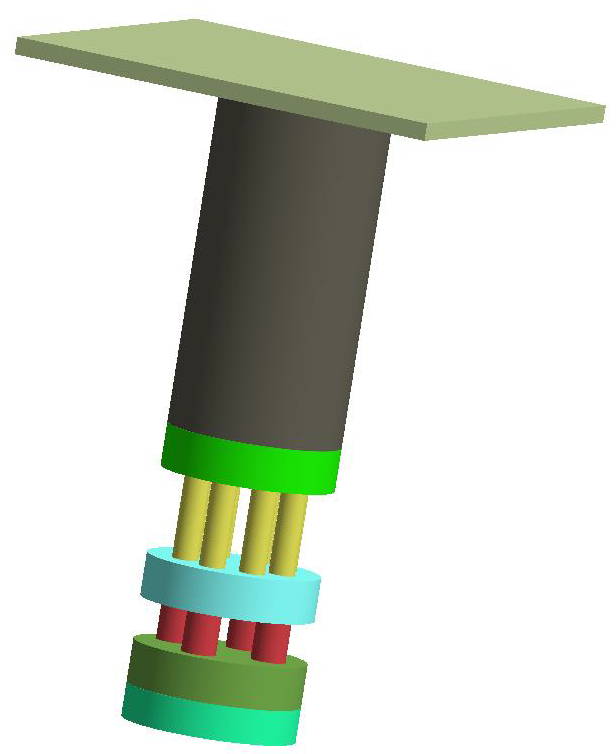SS-T: 3040 Hydrostatic Pressure
Create hydrostatic pressure in SimSolid.
- Purpose
- SimSolid performs meshless structural
analysis that works on full featured parts and assemblies, is tolerant of
geometric imperfections, and runs in seconds to minutes. In this tutorial,
you will do the following:
- Learn how to create a hydrostatic pressure load.
- Model Description
- The following model file is needed for this tutorial:
- HydrostaticPressure.ssp
Open Project
- Start a new SimSolid session.
-
On the main window toolbar, click Open Project
 .
.
- In the Open project file dialog, choose HydrostaticPressure.ssp
- Click OK.
Create Structural Linear Analysis
On the main window toolbar, click .
The new analysis appears in the Project Tree
under Design study 1 and the Analysis Workbench
opens.
Apply Constraints
- On the Project Tree, open the Analysis Workbench.
-
On the workbench toolbar, click Immovable Support
 .
.
- In the dialog, ensure the Face radio button is selected.
-
In the modeling window, select the face as shown in
orange in Figure 2.
Figure 2. 
- Click OK.
Apply Gravity Load
- On the Project Tree, open the Analysis Workbench.
-
In the workbench toolbar, click the
 (Gravity load) icon.
(Gravity load) icon.
- In the dialog, for Load direction vector, enter: 0, 0, and -1 for X, Y, and Z respectively.
- For Amplification factor, enter 1.
- Click OK.
Apply Hydrostatic Pressure
- In the Project Tree, select Structural 1.
-
On the Analysis Workbench toolbar, select
 (Hydrostatic pressure).
(Hydrostatic pressure).
-
In the modeling window, select the face as shown in
orange in Figure 3.
Figure 3. 
-
Enter coordinates for the liquid surface.
- Under Coordinates of a point for liquid surface, for X, enter 0.
- For Y, enter 0.
- For Z, enter 60000.
The Liquid surface indicator will appear in the model.Tip: You can also position the liquid surface using the sphere at the center of the indicator. - For Liquid density, enter 1000.
- Click OK.
Edit Solution Settings
- In the Analysis branch of the Project Tree, double-click on Solution settings.
- In the Solution settings dialog, for Adaptation select Global+Local in the drop-down menu.
- Click OK.
Run Analysis
- On the Project Tree, open the Analysis Workbench.
-
Click
 (Solve).
(Solve).
Review Results
- In the Project Tree, Select the Structural 1 subcase.
-
On the Analysis Workbench, select .
The Legend window opens and displays the contour plot.
Figure 4. 
